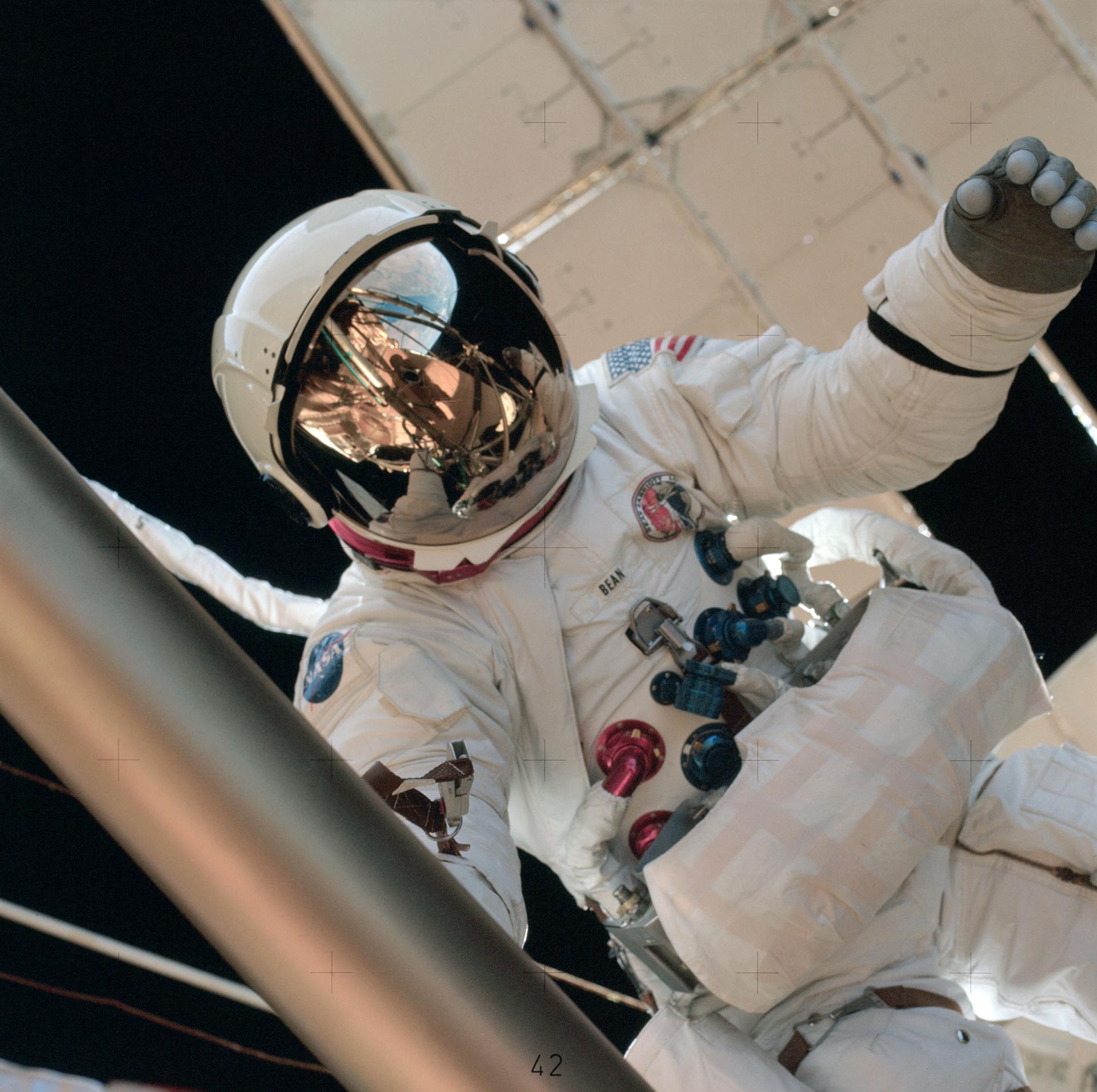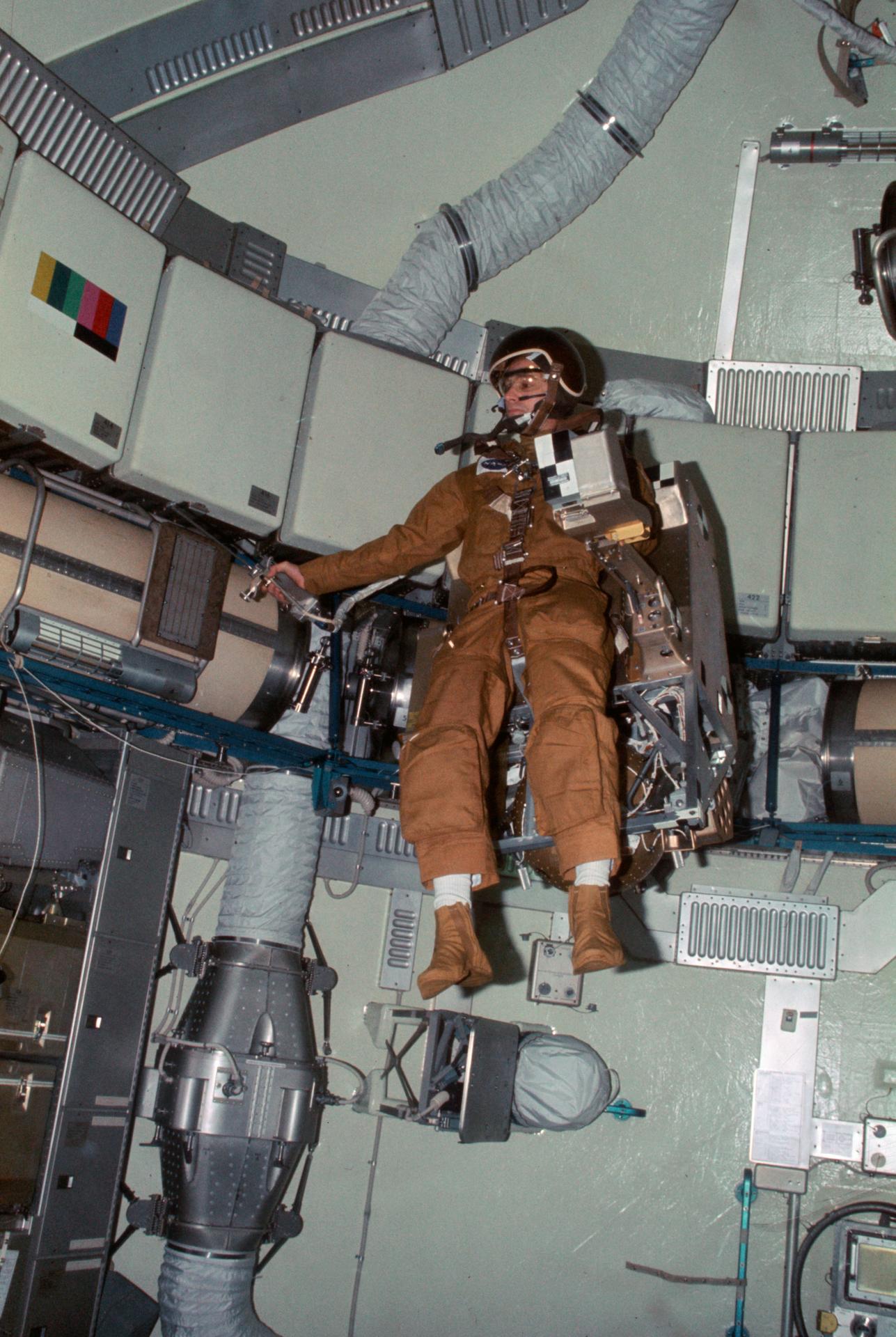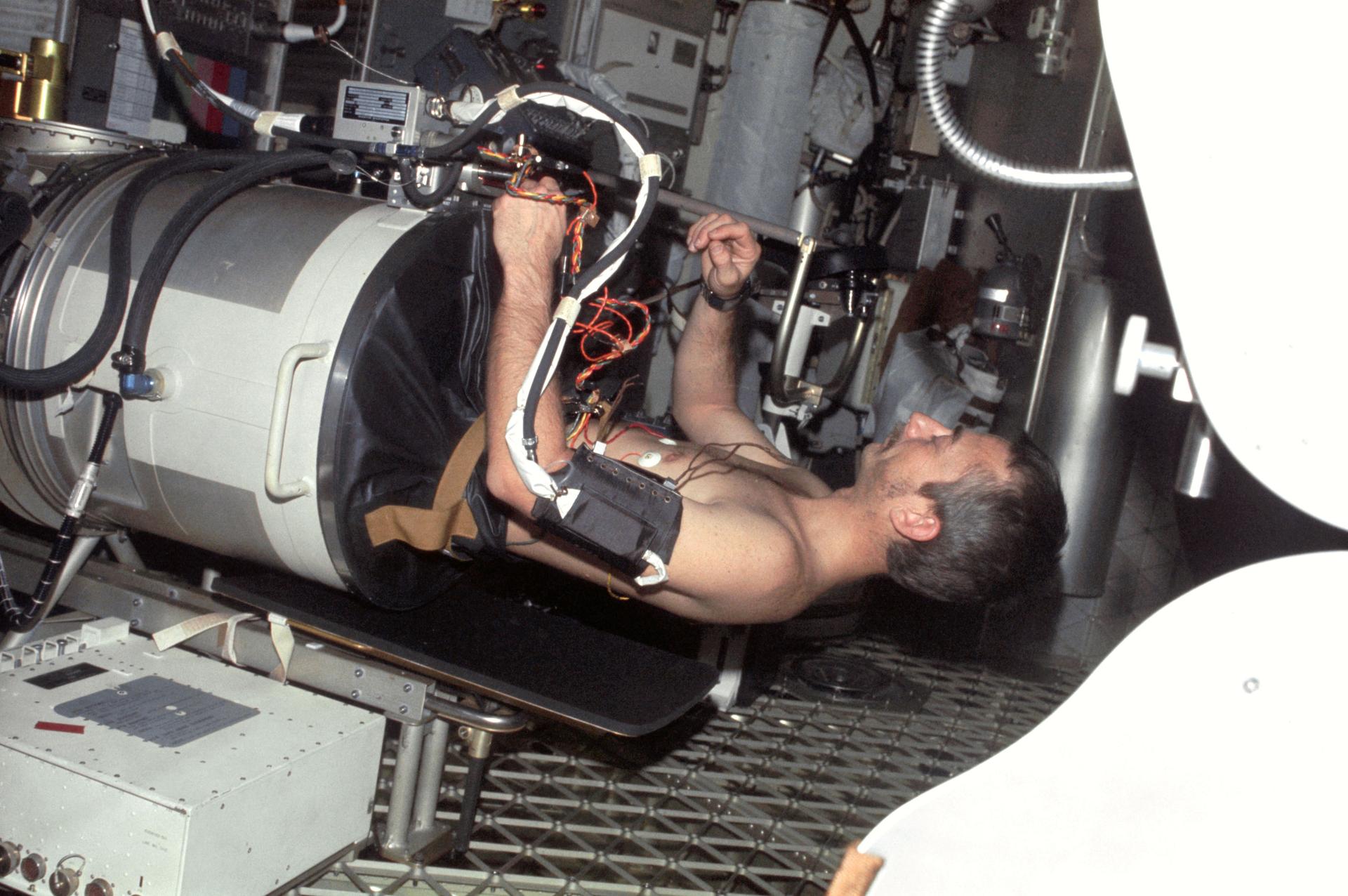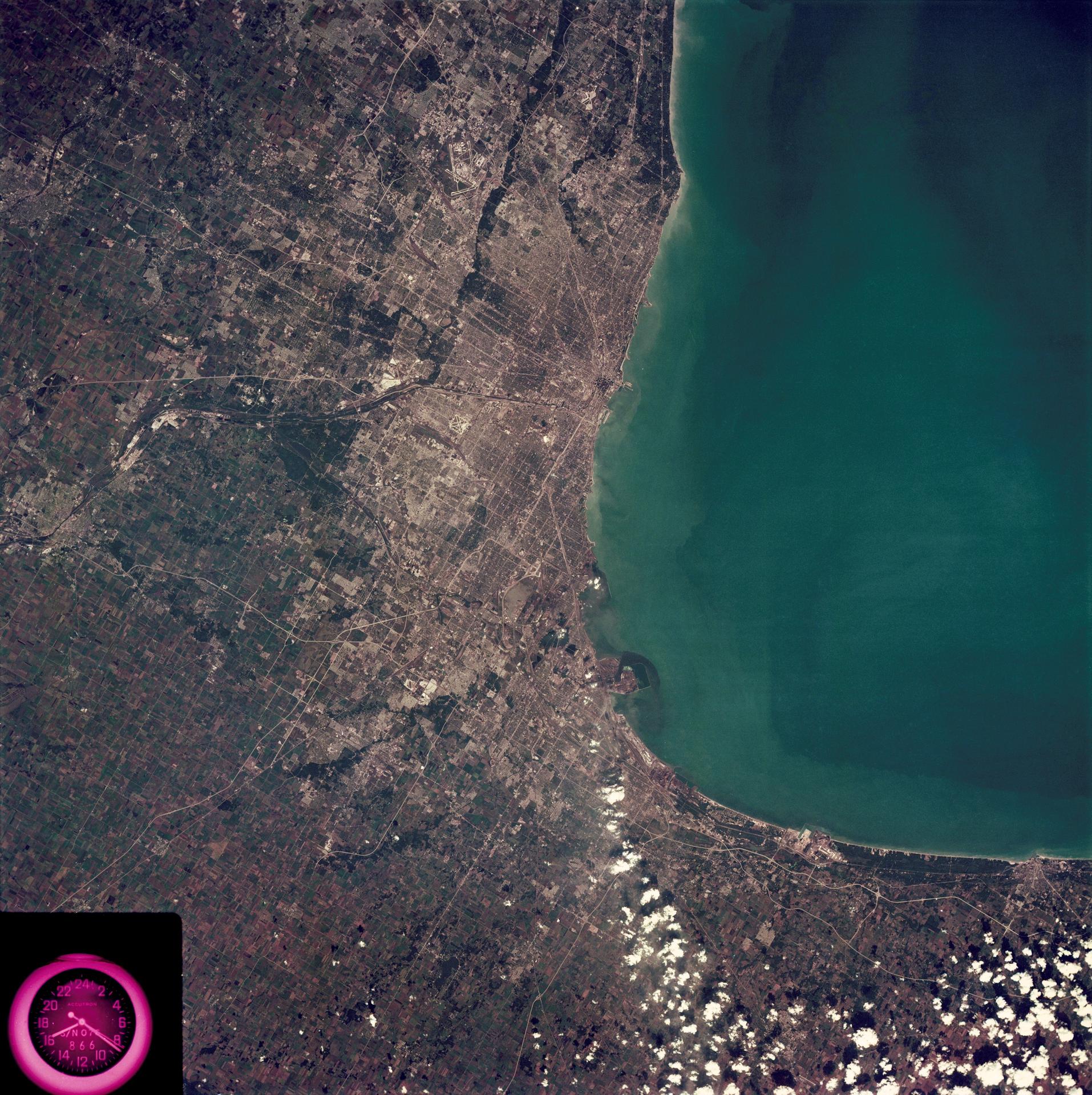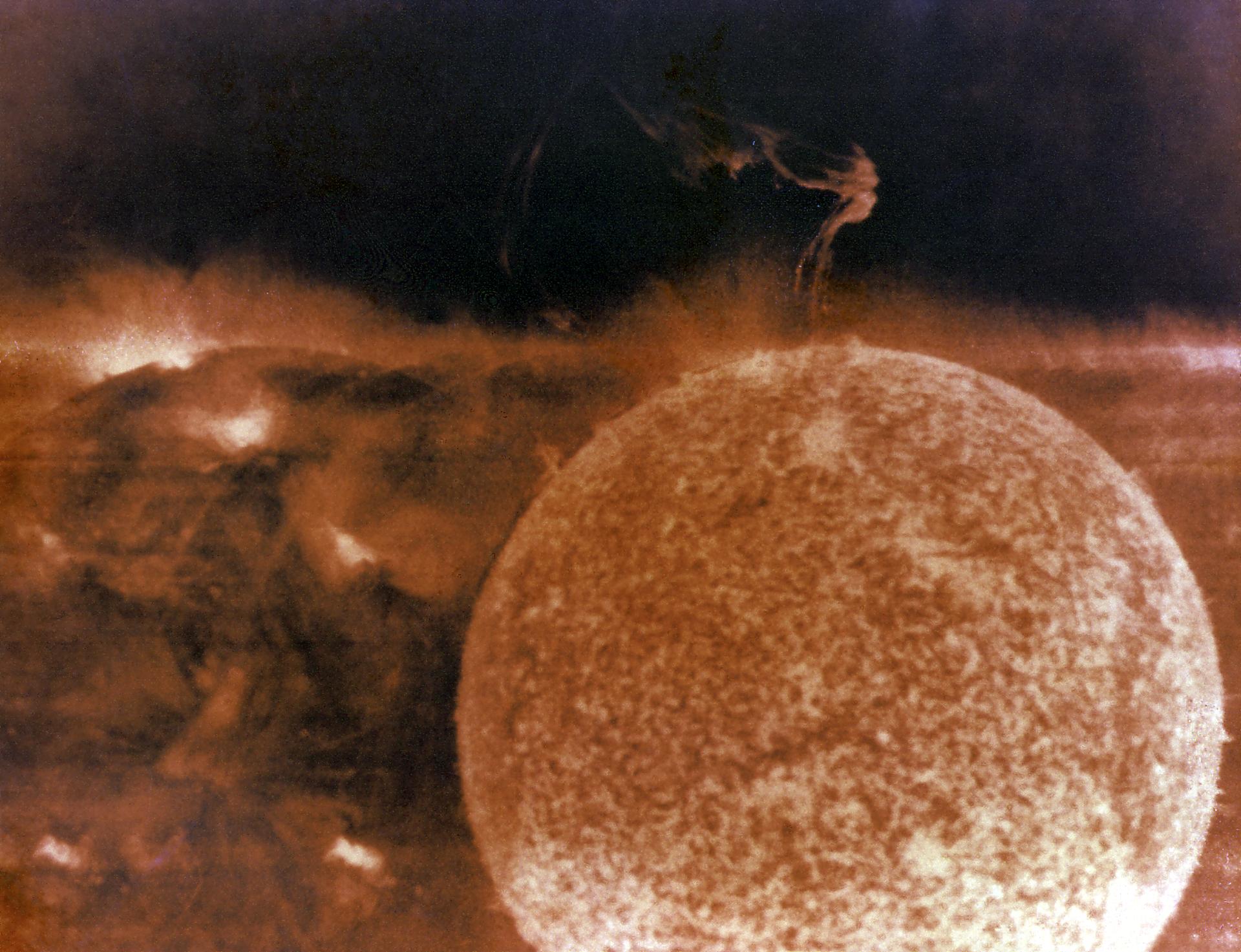The longest human space flight up to that time ended with the splashdown of the Skylab 3 crew of Alan L. Bean, Owen K. Garriott, and Jack R. Lousma on September 25, 1973. The crew splashed down about 230 miles southwest of San Diego and were picked up by the aircraft carrier USS New Orleans. Their flight of 59 days and 11 hours more than doubled the previous 28-day record held by the Skylab 2 crew. Bean returned with the most cumulative flight time of any astronaut, having spent more than 69 days in space when including his Apollo 12 mission. Based on lessons learned from the first crew, such as the need for additional exercise and improved nutrition, the Skylab 3 crew returned in better physical condition despite their longer mission duration.
The trio began their journey on July 28, when they blasted off from Kennedy Space Center in Florida and docked with the Skylab space station 8 hours later. After recovering from space motion sickness the first few days of the mission, the crew got busy with their science investigations and making repairs to the station. On August 6, during the mission’s first spacewalk, Garriott and Lousma deployed the twin-pole sunshade over the existing parasol to help cool the station and replaced film canisters in the Apollo Telescope Mount (ATM). The pair conducted a second spacewalk on August 24, to replace ATM film canisters and install a 24-foot cable for a new set of rate moment gyroscopes they mounted inside the station. During the third and final spacewalk September 22 lasting 2 hours and 41 minutes, Bean and Garriott retrieved all the exposed film cassettes from the ATM for return to Earth and installed some fresh ones. In the three spacewalks, the Skylab 3 crew spent nearly 14 hours outside the station, at the time a record for a single Earth orbital mission.
The crew adapted well to life in space, and by becoming efficient at their tasks completed 300 more hours of research than was planned, accomplishing a variety of science, technology and education experiments. The biomedical investigations focused on better understanding their physiological responses to long-duration space flight, including changes to their cardiovascular, neurovestibular, and musculoskeletal systems and their overall metabolism and nutrition. The crewmembers completed more than the expected number of observations of selected ground sites using multispectral instruments in the Earth Resources Experiment Package (EREP) and exceeded planned solar and astronomy observations with the ATM. As a technology demonstration, the crew practiced flying the Astronaut Maneuvering Unit (AMU) inside the spacious dome of the Orbital Workshop.

NASA Administrator James C. Fletcher praised the mission after the crew’s return which occurred just a few days before the 15th anniversary of the founding of NASA, stating “Skylab 3 is one of the most significant ventures of all times and certainly is a fitting capstone to NASA’s first 15 years.” Fletcher added, “Skylab has given us the confidence and knowledge we need to plan the best and most productive uses of the important new resources at our command.” In a message to the crew, President Richard M. Nixon said, “By your scientific endeavor and your physical endurance, you have converted a space vehicle into a repository of more scientific knowledge than mankind can immediately consume.”
For more insight into the Skylab 3 mission, read Owen Garriott’s and Jack Lousma’s oral histories.





























